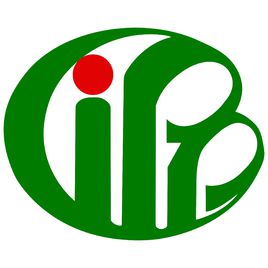| Resource Type | Organism |
|---|---|
| Abbreviation | V.tricorpus |
| Genus | Verticillium |
| Species | tricorpus |
| Description | Verticillium tricorpus MycoBank: MB307745 Description. Verticillium tricorpus was described in detail by Isaac [23]. We provide illustrations of the culture morphology (Figures 12a, 12b), the conidia (Figure 12c), resting structures including resting mycelium, chlamydospores and microsclerotia (Figures 12d, 12e, 12f, 12g), and yellow-pigmented hyphae (Figure 12h). Types. Holotype: Missing, not found at K, IMI, CBS, an ex-holotype culture (UK; garden tomato) available (IMI 51602, CBS 447.54), culture CBS 447.54 included in this study as V. tricorpus strain PD690 and submitted to NRRL (NRRL 54794); Lectotype (designated herein): Specimen K(M) 172015, originally IMI 51602 (England: Fareham, South Hampshire; wilted garden tomato), marked ‘isotype ?’ (Figures 3c, 12g). Specimens examined. Verticillium tricorpus strains PD593 (Japan; Irish potato), PD594 (Japan: Chiba; garden tomato), PD685 (Japan; larkspur), PD690 (UK; garden tomato), and PD703 (Netherlands; carnation) (Table S1), as well as V. tricorpus lectotype specimen IMI 51602 (UK; garden tomato) were included in this study (Figures 3c, 12g). Distribution and host range. Currently known from Japan, Netherlands and UK. Substrates include carnation, garden tomato, Irish potato and larkspur. Commentary. Isaac [23] (p. 194) deposited V. tricorpus type material at IMI, K and CBS. We were only able to locate specimen IMI 51602, a dried V. tricorpus culture on PDA medium labeled ‘isotype ?’ (Figure 3c). Specimen IMI 51602 is likely derived from ex-type strain IMI 51602 deposited at CBS by I. Isaac as strain CBS 447.54. Thus, since the holotype appeared to be missing, we designated specimen IMI 51602, a likely isotype, as the lectotype of V. tricorpus (Art. 9.2, Art. 9.9, Art. 9.10). Specimen IMI 51602 did not display typical V. tricorpus morphology. Whereas verticillate conidiophores and microsclerotia were present (Figure 12g) in agreement with the description provided by Isaac [23], yellow-pigmented hyphae, chlamydospores and resting mycelium were absent. However, according to the ICBN, lectotypes have to be chosen from among isotypes if they exist (Art. 9.10). Verticillium tricorpus specimen IMI 51602 is a likely isotype and was thus designated as lectotype. Upon initial culturing, Verticillium tricorpus colonies on agar medium are yellow to orange (Figures 12a, 12b) due to the presence of yellow-pigmented hyphae (Figure 12h). Resting mycelium, chlamydospores and microsclerotia are also formed simultaneously (Figures 12d, 12e, 12f, 12g). The yellow to orange coloration is typically less intense after prolonged culturing, or if obscured by resting structures. Verticillium tricorpus is morphologically indistinguishable from V. isaacii and V. klebahnii. All three species are characterized by the formation of resting mycelium (Figures 7f, 8e, 12d), chlamydospores (Figures 7g, 8f, 12e) and microsclerotia (Figures 7h, 8h, 12f, 12g), as well as yellow-pigmented hyphae (Figure 7i, 8h, 12h) that confer agar cultures yellow to orange coloration (Figure 7b, 8b, 12b). There is evidence for differences in pathogenicity. Whereas V. isaacii strains PD343, PD610–PD613 were not pathogenic on lettuce or artichoke [41], V. klebahnii strain PD401 was pathogenic on lettuce [51]. Verticillium tricorpus is only pathogenic on tomato [23]. |
| Organism Image |  |
Verticillium tricorpus
Summary


